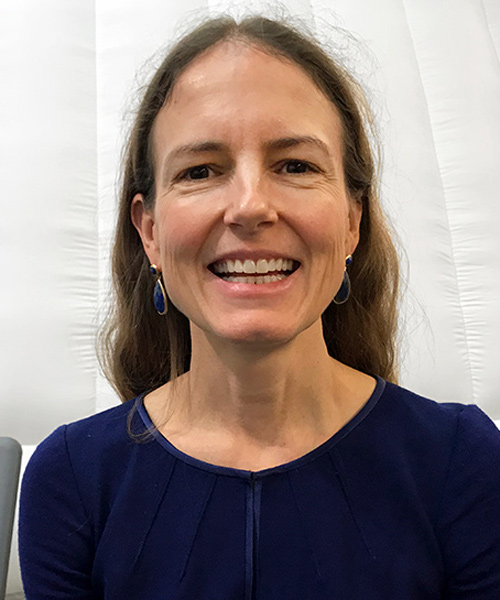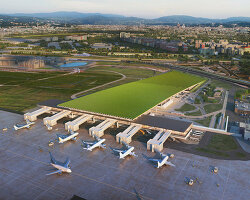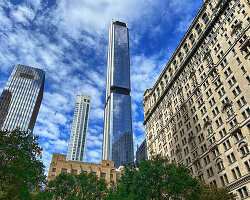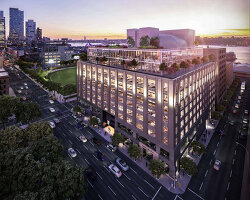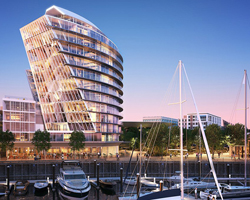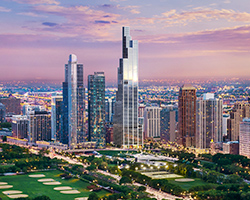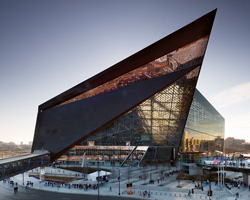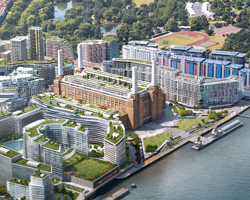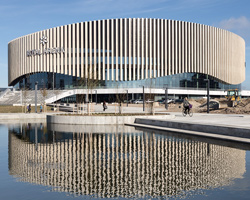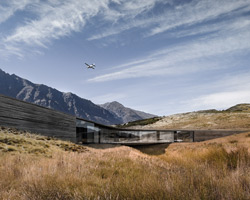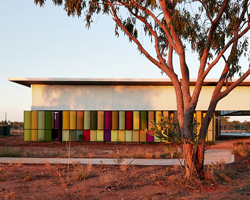during her 18-year career with rafael viñoly architects, andrea lamberti has led both masterplan and building projects across a wide range of sectors. as a partner of the firm, lamberti also oversees strategic planning, new business development, and marketing for the firm, worldwide. at the 2017 world architecture festival, rafael viñoly architects was nominated for two awards: the hills at vallco — a planned neighborhood with the largest green roof in the world — was nominated in the ‘future – masterplanning’ category, while the new stanford hospital — a healthcare facility in stanford, california — was nominated in the ‘future – health’ category.
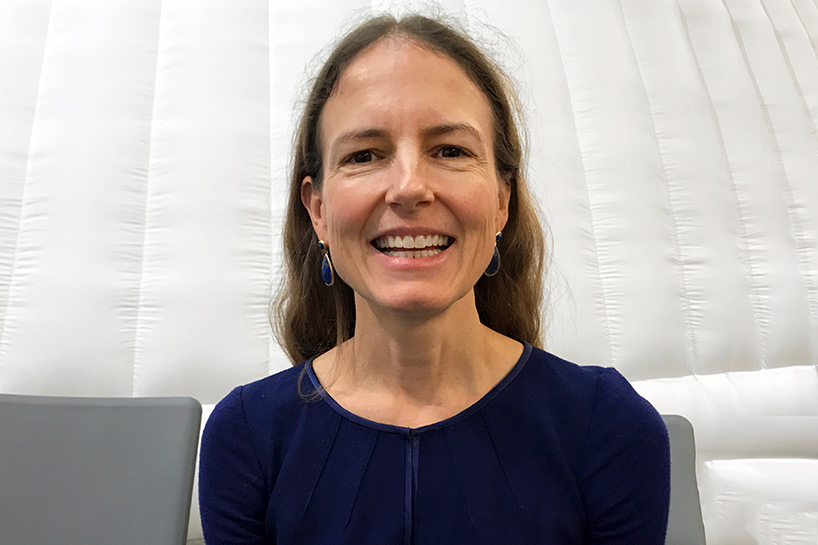
andrea lamberti spoke with designboom at the 2017 world architecture festival in berlin
image © designboom
at the world architecture festival in berlin, designboom spoke with andrea lamberti about the two nominated schemes, the firm’s approach to diverse localities from project to project, and the current state of architecture.
designboom (DB): can you start by telling us about your involvement with this year’s world architecture festival?
andrea lamberti (AL): well, we have been involved over the years, in many different ways. I think rafael (viñoly) was a super-juror about nine years ago and he has been a keynote speaker a few times, as he was yesterday. I have been a juror last year, and this year I am also a juror. this year we were also lucky to be finalists in two categories. so we are active participants in the festival.
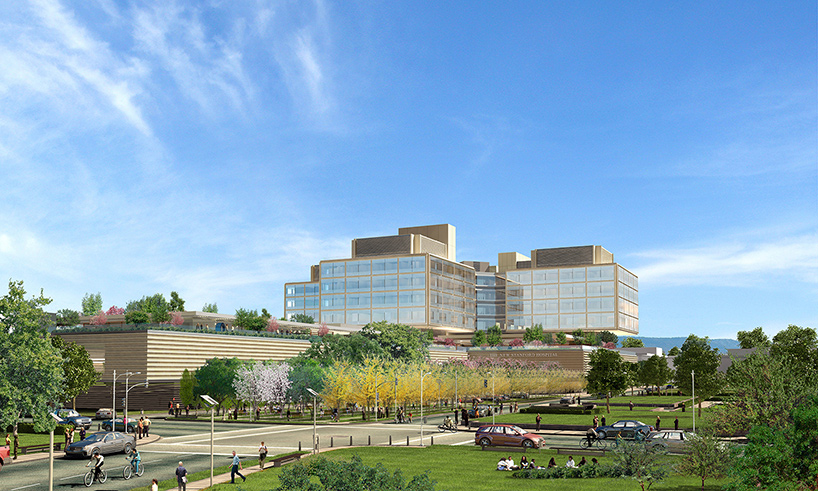
the new stanford hospital, stanford, USA (also banner image)
DB: can you tell us a little about those two projects that are nominated?
AL: one of them is a new hospital for stanford university. it’s a replacement facility because of seismic upgrade requirements. it’s a 120,000 square meter facility, with about 365 beds, which has a very advanced, platform that allows for patient-stays, interventional radiology, and surgery to all happen on one combined level. then there’s another level that has emergency rooms — so there’s a plinth that connects all those diagnostic and care functions. then, there’s a kind of garden level where families can wait, or patients can walk in gardens that are protected. it’s also a kind of check-in zone. above that, there are flexible pods where the beds are located.
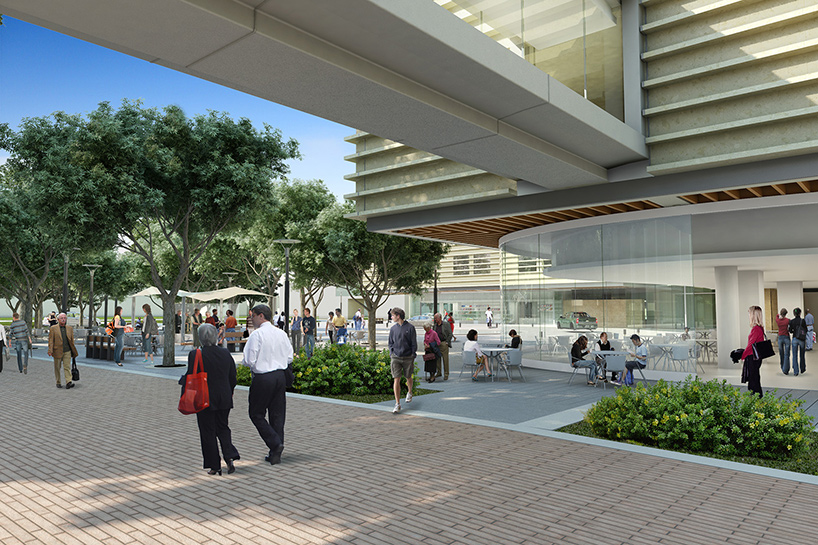
‘the new stanford hospital’ has been nominated by WAF in the ‘future projects – health’ category
AL (continued): each floor is contained by the nursing units with express access, either to the care areas or to the garden level. the project is under construction now. we have a team that’s been on site in what we call ‘a big room’ where we have been working with design, contractor, and owner, and engineers for seven years or so. we first interviewed in 2006, and then we looked at design alternatives before we got it all started. the hospital will open sometime next year.
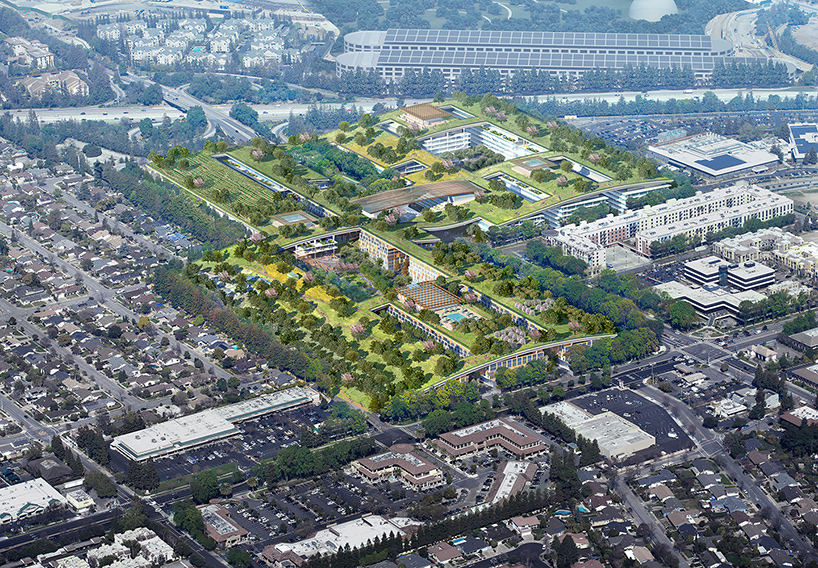
the hills at vallco, cupertino, USA
AL (continued): the other project is a mixed use development in the silicon valley area of northern california. it’s taking the site of a defunct 1970s era shopping mall and transforming it into a new, mixed-use, pedestrian oriented, urban development. it brings together, in one site, residential uses, commercial office space, and outdoor retail shopping zones. these are all unified under a single green roof which becomes a new public amenity. that’s in the planning and approval stages.
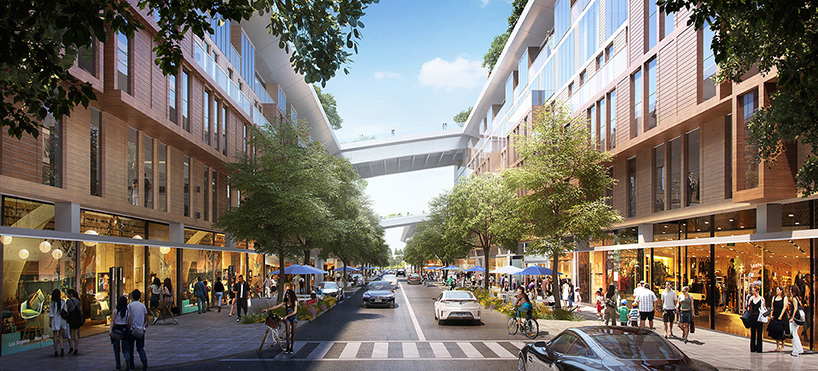
‘the hills at vallco’ has been nominated by WAF in the ‘future projects – masterplanning’ category
DB: do you think that events like the world architecture festival are important and relevant to the architecture world? and to the public in general?
AL: I think that they are. I think that for professionals who are not in teaching, it’s a rather efficient way of getting to be exposed to a lot of new ideas — and relevant ways of thinking from around the world — and learning from them.
DB: as an international firm, how do you approach diverse localities from project to project?
AL: we generally try to approach it by embedding ourselves in those communities. we will always try to engage with local consultant teams and specialists. for landscape, and a lot of the engineering, we’ll want to work with firms that know the local practices for their disciplines. another way, is that we’ll usually form each team by a combination of people from our office — who know the office culture — and people that we would hire or bring in from the site, or maybe an associate firm or partner office.
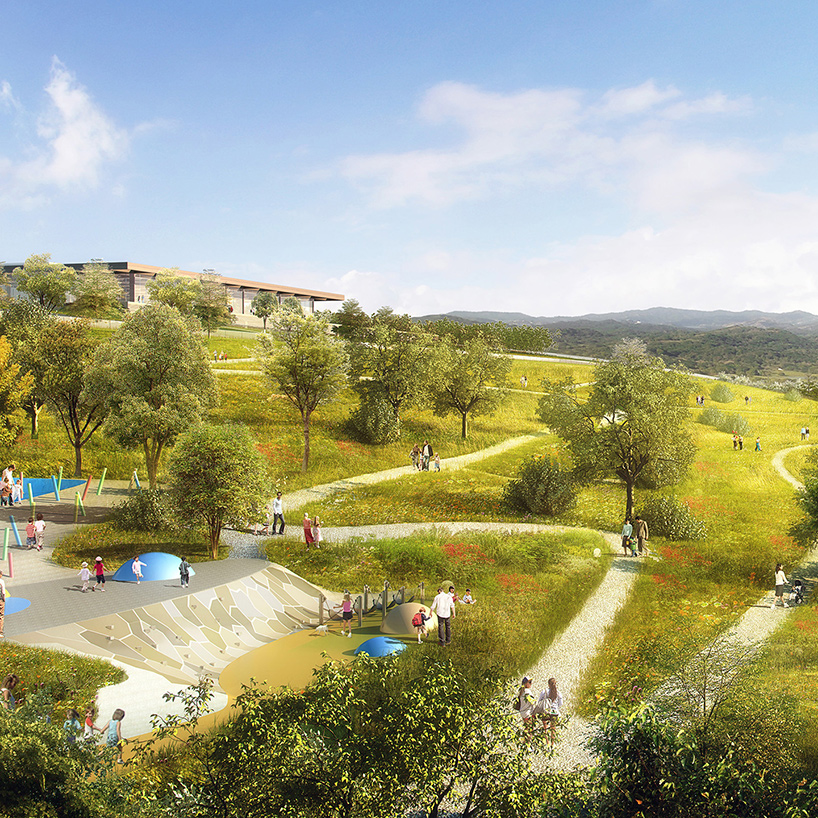
read more about the project on designboom here
DB: do you also try to involve the community in question?
AL: absolutely. for the vallco project, we had several town hall meetings. we have been involved in some events, but additionally the client has been out meeting with business community members.
DB: how do you assess the current state of architecture?
AL: well, I think that’s tough. I think that architects are, as rafael has talked about, losing ground by giving away so much of their responsibility. I have to say I agree with that. but I have to say that I think that it’s exciting. there are so many things that are now being brought directly to the hands of so many people — technologies, ways of collaborating, and ways of thinking — that are so accessible now.
for example, to create some sort of highly advanced system, or structure, or enclosure, or interior material, 20 or 30 years ago, only a few companies could do that. but now, so many companies have access to those technologies and materials. so I think that’s very exciting, certainly on one level.
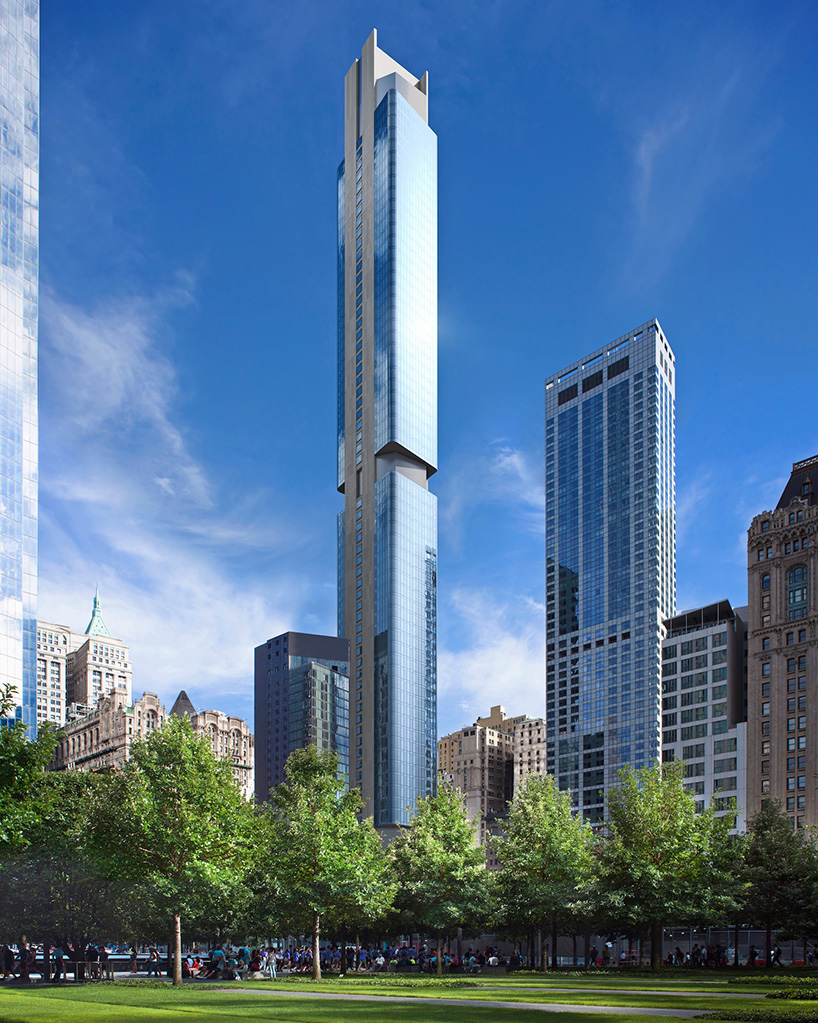
125 greenwich street, new york | image by march
read more about the project on designboom here
AL (continued): I think on another level, we all face a challenge of relevance, given the societal pressures that exist. you have such extremes within the world. you want to provide a better school in a developing country, but, in our own country there are so many structures and facilities that are lacking. not only physically, but also programmatically, where we would need to be working with governments and communities on policies. there is so much. the issues of inequity, ecological resilience, and sustainability, are so challenging, that they require new ways of thinking. on the one hand, we’re seeing greater access to create so many things, but on the other hand, how can that help more people?
DB: do you think it is an architect’s responsibility to help with society’s larger problems?
AL: the question is: how, as an architect, do you work at the policy level? how do you try to find a client that wants to do something new? many times, that might be a situation, or a territory, where that has never been done before. so many times, the challenges are double and triple what they might be for just developing a typical site. but, yes, absolutely I think it is.
university of manchester, graphene engineering innovation centre
video courtesy of rafael viñoly architects
DB: what other projects are you currently working on?
AL: in the UK we’re working on a mixed-use development, where oxford road meets hyde park and kensington gardens. for the university of manchester, we’re developing a new graphene engineering and innovation center. in new york city, we have about six projects under construction — three residential, two office, and one new research campus for the rockefeller university. then we have a new hospital, as I mentioned, for stanford university. in the pipeline, we have some new athletics and sports projects, and maybe some more university work that we can’t really discuss yet.

world architecture festival (WAF) is the largest, annual, international, live architectural event. it includes the biggest architectural awards programme in the world, dedicated to celebrating excellence via live presentations to an audience of high-profile delegates and international juries. WAF is a three-day event for architects and interior design professionals to celebrate, learn, exchange, and be inspired. the 2017 world architecture festival comprises 5 key elements: the WAF awards; a thematic conference programme; an exhibition of award entries; sponsor and exhibitor stands; a series of networking/social events, as well as WAF fringe activities. INSIDE world festival of interiors runs alongside WAF, with its own awards and conference programme.
architecture interviews (267)
rafael vinoly architects (33)
world architecture festival 2017 (22)
PRODUCT LIBRARY
a diverse digital database that acts as a valuable guide in gaining insight and information about a product directly from the manufacturer, and serves as a rich reference point in developing a project or scheme.
